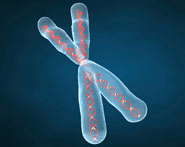


 النبات
النبات
 الحيوان
الحيوان
 الأحياء المجهرية
الأحياء المجهرية
 علم الأمراض
علم الأمراض
 التقانة الإحيائية
التقانة الإحيائية
 التقنية الحيوية المكروبية
التقنية الحيوية المكروبية
 التقنية الحياتية النانوية
التقنية الحياتية النانوية
 علم الأجنة
علم الأجنة
 الأحياء الجزيئي
الأحياء الجزيئي
 علم وظائف الأعضاء
علم وظائف الأعضاء
 الغدد
الغدد
 المضادات الحيوية
المضادات الحيوية|
Read More
Date: 28-10-2015
Date: 5-11-2015
Date: 2-11-2015
|
Tuatara
Tuataras (class Rhynchocephalia) superficially resemble lizards (class Reptilia), but the two known species are actually members of the smallest terrestrial vertebrate class on Earth, the Rhynchocephalia, a unique and ancient evolutionary lineage whose fossils (from Asia, Europe, North and South America, and Africa) first appeared in the early Triassic more than 220 million years ago. Today, Tuataras are found only on about thirty islands off the coast of New Zealand; their ancestors on other continents became extinct around 65 million years ago.
Male Tuataras lack a penis or other copulatory organ (unlike mammals, turtles, reptiles, crocodilians, and birds), possess a skull with two pairs of arches (like crocodilians), exhibit teeth on the palatine bones of the jaw (unlike lizards), and have teeth that are set squarely on the jawbone (with limited ability for replacement when lost, unlike the class Reptilia); old individuals may have teeth worn entirely away. Tuataras lay shelled eggs on land (unlike the class Amphibia), and the eggs may take as long as fifteen months to hatch. Tuataras live in burrows, emerging mostly at night but sometimes during the day to bask in the sun.

A Cook Strait Tuatara. Tuatara is a Maori word meaning “peaks or spines on the back.”
Tuataras are long-lived, apparently reaching over one hundred years of age. Males are larger (up to 61 centimeters [2 feet] in length and 1 kilogram [2.2 pounds] in weight) than females (45 centimeters [1.4 feet], 15 kilograms [.33 pounds]). They are insectivorous (depending on insects for food), but will opportunistically prey on small vertebrates. Tuatara is a Maori word meaning “peaks or spines on the back,” in reference to the conspicuous middorsal crest on the back and tail of males and, to a lesser extent, females. Access to much of the remote island habitat of this animal is difficult, providing it with protection from human disturbance; historically, on those islands where access was less daunting, humans arrived, and the tuataras became extinct.
References
Pough, F. Harvey, et al. Herpetology. Upper Saddle River, NJ: Prentice Hall, 1998.
Robb, Joan. New Zealand Amphibians and Reptiles. Auckland, Australia: Collins, 1986.



|
|
|
|
5 علامات تحذيرية قد تدل على "مشكل خطير" في الكبد
|
|
|
|
|
|
|
مكتبة العتبة العباسية.. خدمات رقمية متطورة وجهود لتلبية احتياجات الباحثين
|
|
|